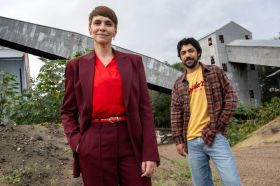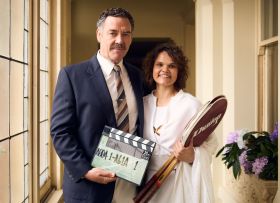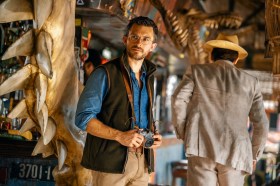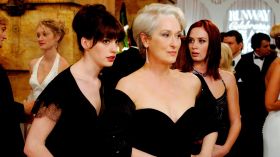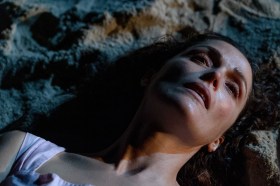Do you remember the nightmares you used to have as a child?
I do. I would walk through the house at night to discover a giant stone turret rising through our floor and ceiling. Inside the turret wall was a door, opening up to invite me in. The inside was very narrow, with only a spiral staircase there to take me up, and up, and up … until eventually I’d reach the top, where two witches stood on top of a wooden mezzanine. The witches were classically green, with big, warty noses, and they were stirring a large cauldron. ‘Come closer, dear!’ they’d say, curling their boney fingers towards the cauldron. Terrified, I would try to run away, but the steps would trip me and I’d be sent spiraling down the center of the turret. And then – boom! I’m back in bed again, sweating profusely.
I was reminded strongly of these dreams when rewatching a film called House (Hausu, 1977), a psychedelic horror flick directed by Nobuhiko Obayashi. It’s about a schoolgirl called Gorgeous traveling with her six friends to her aunt’s country home, where the Sailor Moon-esque girl gang have the cozy-cottage getaway of their dreams … until sinister forces – and a murderous cat – totally kill the vibe. One by one, the girls are beset by paranormal demons, and slowly but surely eaten up by the house.
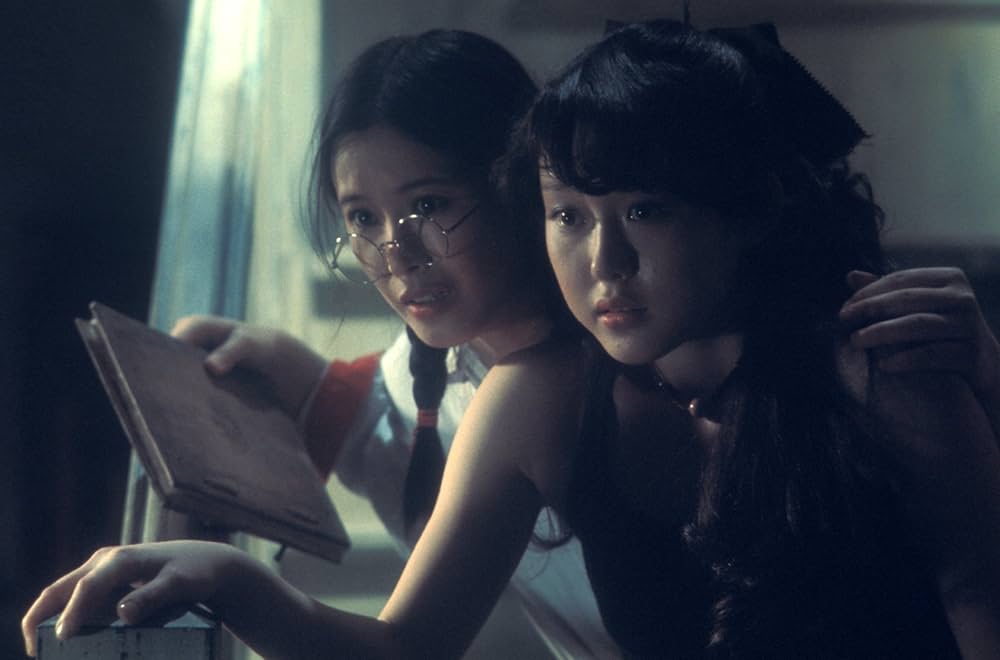
House is one of the greatest Japanese films I’ve ever seen, and I’m going to give you five reasons why.
Firstly, it’s one of the most ‘child-like nightmare’ movies I’ve ever seen. That’s probably because:
1. It was co-written by a child
A cat spewing blood, a murderous piano, ghostly geishas, dancing skeletons, flying futons, and a head coming out of the well to bite a girl on the bum. All of these ideas sounds like crazy kid’s dreams to me – and all of them feature in House, thanks to the discussions Obayashi had with his daughter, Chigumi Obayashi, who was about 10 at the time of making House.
Sensing it was important to consult a young girl on her own fears in order to fuel ideas for girls in House, Obayashi turned to his daughter many times during the writing and directorial process. ‘I always discuss important matters with children,’ Obayashi explained in the 2010 documentary Constructing a House. ‘Adults can only think about things they understand, so everything stays on that boring human level.’
This collaboration with his kid explains a good bit of why House is so nuts – and so good. It’s like listening to a child trying to recount a story while constantly embellishing it with whatever elements they like. You have to let go of sensible explanations for everything and let your mind be captured by the rapidly occurring oddities.
Read: Dandadan review: Scully and Mulder wannabes take on aliens, ghosts, and highschool
2. It’s inspired by Jaws … kind of
Sometime in 1975, Japan’s Toho Studios was searching for its next big blockbuster. Seeing the massive success of Spielberg’s Jaws, they too wanted their own creature feature mega hit. The studio approached Obayashi, who was then best known for directing TV commercials, with this request directly: give us the next Jaws, and don’t spend too much money on it.
Obayashi took on the challenge, and after watching Jaws and consulting with his daughter (as mentioned above), he wrote House. Toho were, as you’d expect, pretty shocked: the script was nothing like Jaws at all. Nevertheless, the film was shopped around to different directors, all of them passing on it for fear of ending their careers. After two years of this, the studio let Obayashi make it, complete with his borderline bizarre production stylings, a massive set, and a shooting schedule that had absolutely no storyboards. Thus, House was born.
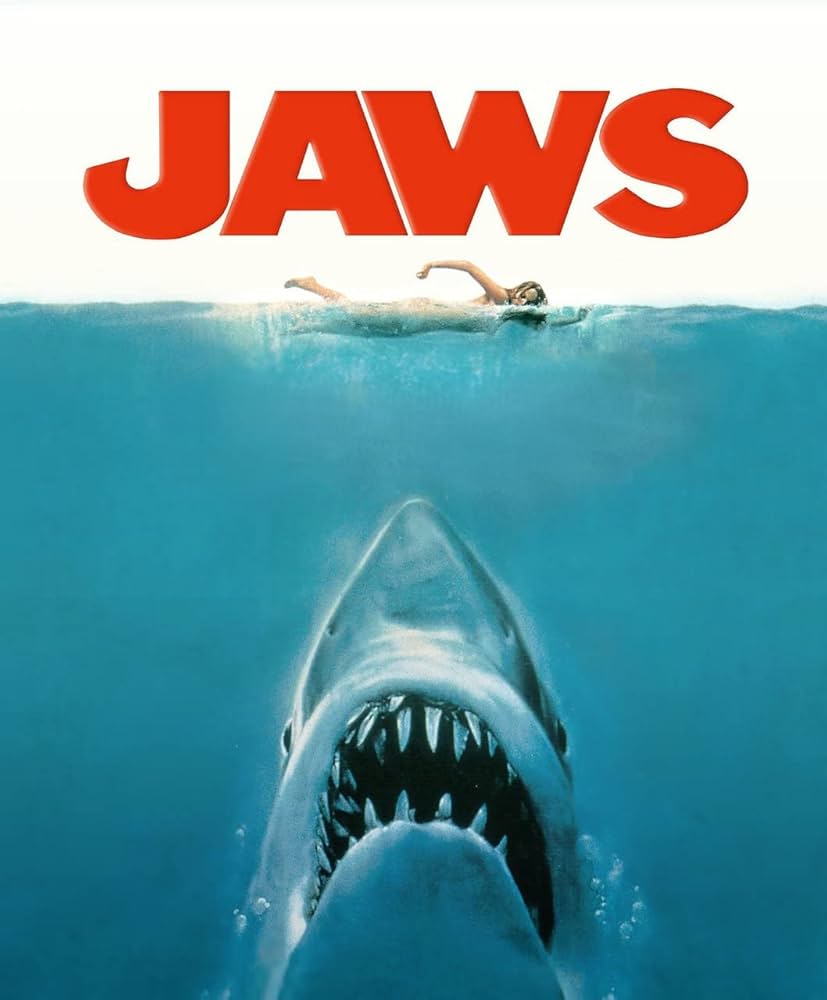
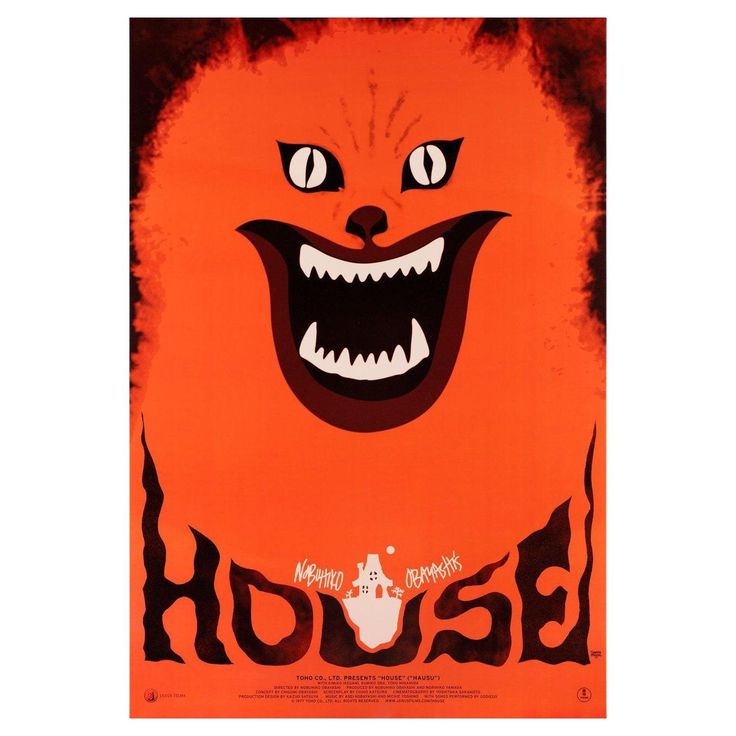
Perhaps unsurprisingly, it completely tanked at the box office. It has since found a cult audience decades later thanks to a Criterion release (and a few internet memes, too).
3. It’s got a killer soundtrack
The soundtrack for House was written and performed by the rock band Godiego, who are probably best known for making the theme tune for 1978 TV series Saiyūki (which was translated to Monkey in the UK).
Featuring an airy, down-tempo piano motif layered throughout, the House soundtrack has a predominantly pop-rock feel, with some rhythm and blues in there too. It’s super fun and oh-so-seventies.
The song ‘Cherries Were Made For Eating’ was written for the film, and if you heard it out of context you’d be forgiven for thinking the movie was some kind of whimsical adventure. Actually, House definitely is a whimsical adventure – just one where all the protagonists end up dead.
If the Jaws score evokes a lurking and inevitable dread, then the House soundtrack evokes a summery nostalgia that gradually devolves into circus-like madness. It’s a perfect match for the imagery it accompanies. Oh, and that piano motif I mentioned? You will probably recognise it as the tune to My Chemical Romance’s ‘Welcome to the Black Parade‘.
ScreenHub: Halloween 2024: the best scary movies showing in cinemas
4. It has an unforgettable aesthetic
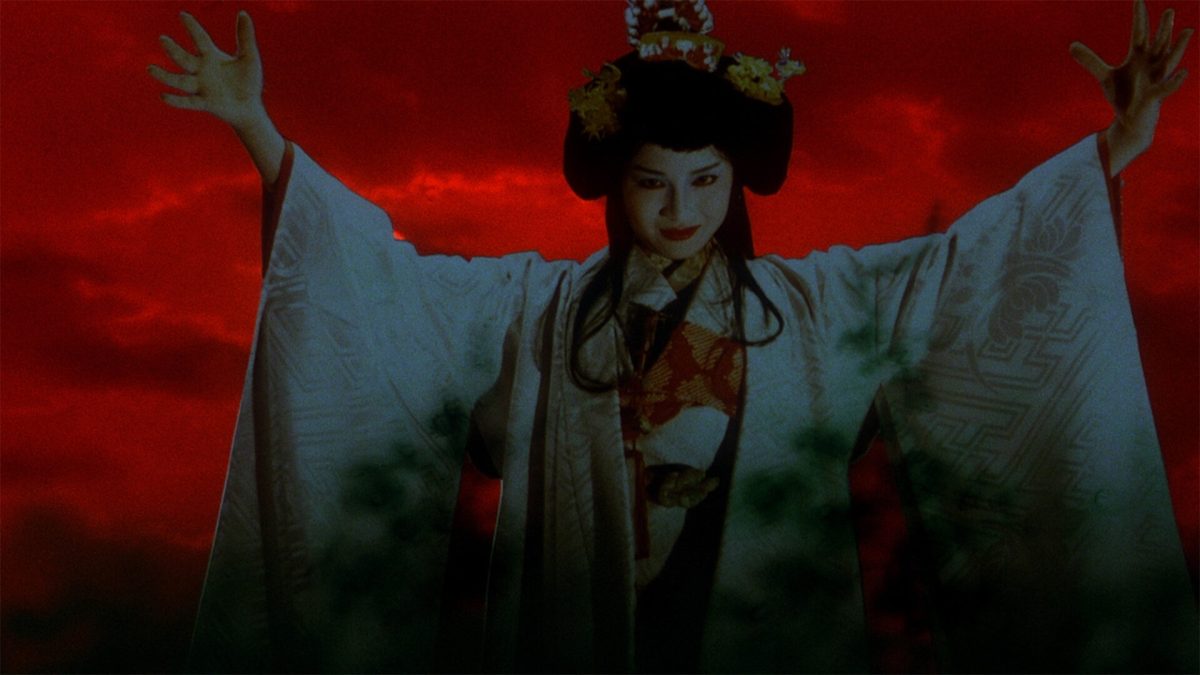
The prominent use of colour filters, stop-motion effects and a blend of still photography and animation is what makes House a truly unforgettable film. While it may seem off-putting at first, the moving scrap-book like aesthetic is what gives the film so much of its charm. Much of it comes from Obayashi’s TV commercial background, which is why so much of it has that glossy, magazine cut-out look. When the characters start getting offed, it’s via things like a piano whose keys bite the fingers of the girl playing it, followed by an orgiastic spray of bright red blood, a stop-motion skeleton gyrating maniacally in the background, and hand-drawn action lines animated over the film. Pure arthouse bliss.
The childlike sense of playing with things that frighten us doesn’t just appear in the story, as mentioned above. It’s expressed very strongly in the film’s visual language and wacky sense of style. Reds, blues and oranges pop like comic panels on the screen, and the mad-cap zooms and rapid cuts lend to the descent into disorientation and sense of helplessness that the girls feel.

The highlight among highlights is Blanche, the white cat who can jump in and out of paintings and possess bodies like it’s going out of fashion. She appears in multiple forms: a regular cat, whose eyes glow bright green to prelude disaster, a still painting (like the one pictured in the poster above), and a distorted, cartoonish ghost that looks like it was drawn by a kid. In a sense, Blanche is the film’s mascot, which is why her iconic image appears on the poster.
5. It was influenced by the bombings of Hiroshima and Nagasaki
Obayashi grew up in Hiroshima, where in 1945 the devastating atomic bombing occurred, destroying the city and taking most of his childhood friends with it. He was just seven years old.
In the documentary Constructing a House (2010), Obayashi explained that he ‘wanted to write a fantasy with the atomic bomb as a theme’. In the film, it’s revealed that Gorgeous’ aunt lost her one true love during World War II, with a strong implication that he was killed by the atomic bomb. The aunt’s envy of the holidaying girl’s freedom and untainted youth is what manifests into a killer house, with Blanche the cat standing in for the bomb. It’s not the most serious-faced exploration of war, but it’s certainly one of the more interesting ways art has ever grappled with wanton human destruction.
In many ways, House is a response to Obayashi’s lingering, childlike feelings of hopelessness and despair that followed that event. It’s also about how children view such an unimaginable disaster, and how they recall and process the un-processable many years later.
Where to watch House
House will screen on 31 October at Cameo, Lido and Ritz cinemas. For digital copies, you can rent or buy House on Prime Video. For physical copies, Cinemaniacs currently sell the blu-ray.

